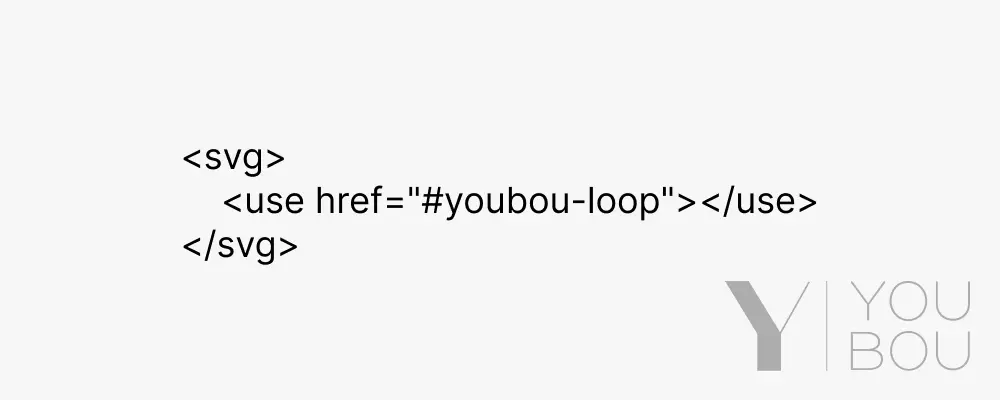Scalable Vector Graphics (SVG) are a great way to include high-quality graphics in your website without compromising on performance. Here’s a simple guide on how to optimize SVG usage in your WordPress site.

1. Echo the SVG
First, create a function to echo the SVG using the <use> element.
/**
* Echo SVG
*
* @param string $width SVG width
* @param string $height SVG height
* @param string $name SVG file name
*/
function youbou_svg( $width, $height, $name ) {
global $youbou_svg_used;
$youbou_svg_used[ $name ] = true;
$result = sprintf(
'<svg width="%d" height="%d" aria-hidden="true" role="img" focusable="false"><use href="#youbou-%s"></use></svg>',
$width,
$height,
$name
);
return $result;
}2. Add Definitions in the Footer
Next, add the SVG definitions to the footer. This ensures that all SVG symbols are included at the end of the document.
/**
* Add SVG definitions to the footer
*/
function youbou_svg_definitions() {
global $youbou_svg_used;
if ( empty( $youbou_svg_used ) ) {
return;
}
echo '<svg style="display:none;"><defs>';
foreach ( $youbou_svg_used as $svg => $value ) {
$svg_path = get_theme_file_path( '/assets/svg/' . $svg . '.svg' );
if ( ! file_exists( $svg_path ) ) {
return;
}
$content = file_get_contents( $svg_path );
$content = preg_replace( '/^<svg /', '<svg id="youbou-' . $svg . '"', trim( $content ) );
$content = str_replace( '<svg', '<symbol', $content );
$content = str_replace( '</svg>', '</symbol>', $content );
$content = preg_replace( '/(width|height)=\"\d*\"/i', '', $content );
$content = preg_replace( "/([\n\t]+)/", ' ', $content );
$content = preg_replace( '/>\s*</', '><', $content );
echo $content;
}
echo '</defs></svg>';
}
add_action( 'wp_footer', 'youbou_svg_definitions', 99 );3. How to Use It
To use an SVG, call the youbou_svg function with the desired width, height, and name of the SVG.
echo youbou_svg( 20, 20, 'loop' );Ensure you have a folder named svg inside the assets folder of your theme, containing your SVG files.
File Structure:
your-theme
--assets
--svg
--menu.svg
--loop.svgIf your SVG files are located in a different directory, update the path in the youbou_svg_definitions function (line 14) to reflect the correct location.
4. HTML Output
Here’s the HTML output generated by the above functions:
A. Output of the SVG
<svg width="20" height="20" aria-hidden="true" role="img" focusable="false">
<use href="#youbou-loop"></use>
</svg>B. Output of the Definitions
<svg style="display:none;">
<defs>
<symbol id="youbou-loop" xmlns="http://www.w3.org/2000/svg" viewBox="0 0 24 24">
<path d="m19.6 21l-6.3-6.3q-.75.6-1.725.95T9.5 16q-2.725 0-4.612-1.888T3 9.5t1.888-4.612T9.5 3t4.613 1.888T16 9.5q0 1.1-.35 2.075T14.7 13.3l6.3 6.3zM9.5 14q1.875 0 3.188-1.312T14 9.5t-1.312-3.187T9.5 5T6.313 6.313T5 9.5t1.313 3.188T9.5 14"></path>
</symbol>
</defs>
</svg>By using these methods, your HTML will be cleaner and more efficient. If you need to use loop.svg multiple times, there will always be a single definition for it in the footer, ensuring consistency and reducing redundancy.